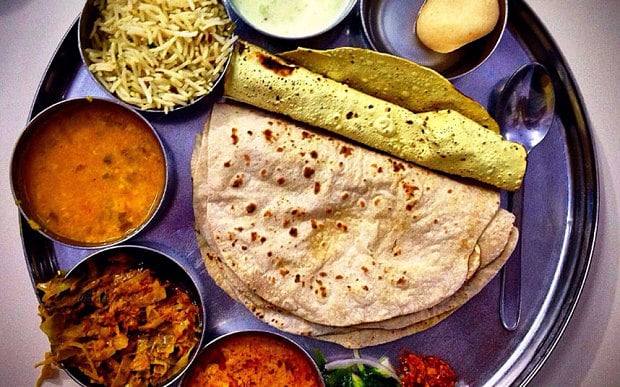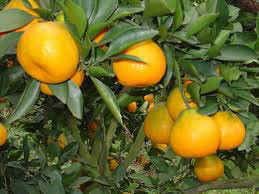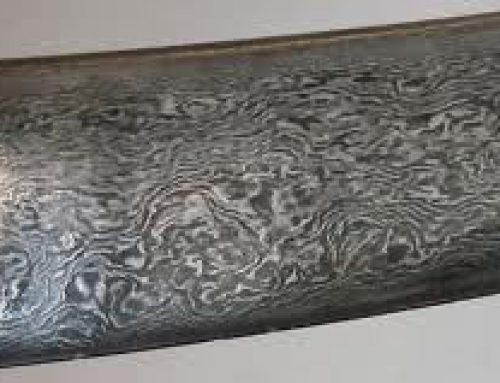
Indian food: rice, chapatis, sauces, lentils
What did people eat in ancient India?
The earliest Indians, the Harappans, probably ate mainly wheat and rice, millet and sorghum, chickpeas and lentils. Often they ate fish, if they lived near the coast or a river. Sometimes they ate beef, pork, lamb and goat meat, and chicken.
Why chickpeas get ripe in the summer
Where does chicken come from?
Lots more India articles
Rice and chicken, bananas and plantains and citron fruit seem to have come from Thailand. Wheat and chickpeas, lentils and lamb came from West Asia. Indian cooks used many Central Asian herbs and spices, like cumin, cilantro (also called coriander), anise, and fennel. They got cinnamon from Sri Lanka, an island to their south-east.
History of cinnamon
Where are bananas from?

Cinnamon sticks
Cooks made some of the grain into stews or soups. They baked grain into flat breads called chapatis or yeast breads called naan. Indian people also enjoyed chewing on sugar cane, which grew naturally in India.
History of sugar
Indian food and vegetarianism
But by around 300 BC, under the Mauryans, a lot of Hindus felt that animal sacrifices added to your karma. Eating meat kept you from getting free of the wheel of reincarnation. Animal sacrifices became less popular. Although people didn’t give up eating meat entirely, they ate much less of it. A lot of people became vegetarians. Mauryan food scientists expanded fruit choices for these new vegetarians by breeding two different kinds of citrus fruit together to get sweet oranges.

Oranges growing in China
History of oranges
Who were the Mauryans?
About this time, these same food scientists also developed a better kind of sorghum, durra sorghum, that was easier to harvest. This new sorghum quickly spread from India to China, West Asia (and from there to Europe) and East Africa.
Indians stopped eating beef
In the Gupta period, around 650 AD, Hindus began to worship a Mother Goddess. Cows were sacred to her, so Hindus stopped eating beef pretty much completely.
More about Hinduism
Sugar and lemons
About the same time, Indian scientists invented a way to make sugar cane juice into sugar cubes. More people started to eat more sugar and sugary desserts. By 900 AD, lemons and purple carrots reached India from Central Asia too.
History of carrots
A fourteen-year-old Indian boy making bread
Indians stopped eating pork
And then around 1100 AD, with the Islamic conquests in northern India, most people in India stopped eating pork as well, because the Quran says not to eat it. People could still eat lamb or goats or chicken, but most of the people in India became vegetarians, and only ate meat very rarely or not at all. Along the coasts and rivers, though, people did still eat plenty of fish.
Islamic conquests of India

Brown lentils
The vegetarian food that Indians ate was mainly wheat flatbreads or a kind of flatbread made out of chickpeas, with a spicy vegetarian sauce with lentils, and yogurt. Or people ate rice, with yogurt and vegetables.
More about lentils
Where does yogurt come from?
How about rice?
Coffee comes to India
But if the Indian people gave up pork because of Islam, they also got a new drink – another food from Africa: coffee, which Arab traders brought originally from East Africa. Coffee became popular in India, but it was very expensive because they had to buy it from the Arab traders and couldn’t grow it themselves.
History of coffee
Did you find out what you wanted to know about the history of Indian food? Let us know in the comments!





Hi Karen,
I am doing a research project for Uni and i need to figure out what ancient indians used for cooking utensils that they use now
Can you please help me?
Amilia
Hi Amilia,
Well, look around your kitchen! People have been using wooden spoons since the Stone Age, and we still use them now. I also still use a stone mortar and pestle to grind spices, as they did. You may use pottery mixing bowls, and they did too. By the time of the Guptan Empire, most families had a steel knife to use cutting vegetables, as you do, and probably a wooden cutting board. Baskets have always been around to keep fruit and vegetables in. It depends where in India, though: many people in India today have American-style kitchens, while many others cook over open fires using clay pots in ways that are not very different from antiquity at all.
Εάν μεταφράζετε αυτό το σχόλιο, δεν είστε ελληνικά.
also very funny!
my friend katbre is concerneed that uyporu are leaving tracks of kitty liteerr
Ha ha! No, those are lentils :)
WAS ObEsiTy Ever A PrObLemo In InDiA DurIng the MEdEIval Tims?
did they have gloososso
Well, yes, there have always been people who were seriously overweight. This was especially a problem for people who didn’t get much exercise, like if they couldn’t walk well or weren’t allowed outside. But most people were not overweight. They ate mostly beans, brown rice, and whole-wheat bread, and they also exercised much more than most people do today, working in the fields, carrying things, or just having to walk everywhere they went.
lot of food
…im only 11
Hi! Welcome! A lot of people who visit this site are eleven! That’s a great age to read about history.
Cool
In which city was this published in?
Portland, Oregon
My son is doing a project about Medeival India. Is there anything notable about foods eaten then? Thank you!
Hi Suzanne! The differences between ancient and medieval India are mainly that 1) a lot more people – most people – are vegetarians or near-vegetarians and 2) that they have lump sugar and sugar candy, and 3) that they have oranges and lemons, and purple carrots.
If he needs to make some typical Indian food for his project, any lentil dal and flat Indian bread, rice, spinach, and yogurt would be appropriate.
um I think it was great and could I use some of it for my indian inquiry
Thank you, Juan! I love getting comments like that! I’m glad we could help. If you have a teacher or librarian who would like to link to this site, we’d be very grateful, so other students could find it! Or, if you or your folks would like to sponsor our Patreon, it’s here: https://www.patreon.com/quatr_us. Every sponsored $1.00 gets the ads off an article so we can all enjoy reading without the distracting ads.
would the Indians eat lamb with rice??
Yes, if they weren’t vegetarians, lamb and rice would be a pretty common Indian recipe: https://www.panningtheglobe.com/indian-lamb-biryani/
I need an ancient indian project for history class…an ideas? Its for the 6th grade.
We have lots of projects, Sienna! Check them out here: https://quatr.us/history-india-stone-age-today – the projects are at the bottom so you’ll have to scroll down.
Thanks! This is sooo helpful for my essae
good luck on your essae
We have a new Indian restaurant opening up soon and was trying to figure out what they would be serving, this helped me out a lot, thankyou so much…
What did the untouchables eat in ancient India?
The same as other people, but they were generally poor, so they ate less food – they often went hungry. And they would have eaten very little meat, mostly rice and lentils and chickpeas, and greens. They wouldn’t have been able to afford much pepper or cinnamon or sugar. Or oranges, or coffee. But they would have had bananas, and probably fish.
An interesting comment : The word Orange came from Naranja -> Naranga ( Sanskrit word for Orange)
Yes! You can see that, and many other facts about oranges, in our article about the history of oranges here: https://quatr.us/china/oranges-lemons-come.htm
माफ़ कीजिये + srry
bhaarat ke bhojan ke itihaas ka bahut achchha svaad dis india history of indian food is very gud to know..
Thanks! I’m glad you liked it, Sanjana!
lemon is native to india not central asia.
Citrons come from New Guinea and Australia, but lemons (which were bred by Iranian food scientists) come from Central Asia. I am pretty confident in our research. You’ll find more about the history of lemons in this article: https://quatr.us/china/oranges-lemons-come.htm
It gave me everything I need for my project, Thank
Thank you, Karen! Was obesity ever a problem in ancient india?
Mostly people didn’t think of obesity as a problem. Only rich people could afford to be fat, so people admired fat people because it showed they were rich.
Good to know the history of Indian food
I’m glad you liked it! For more info, check out these articles too: https://quatr.us/food-2/history-cinnamon-indian-food.htm and https://quatr.us/food-2/black-pepper-come-india.htm